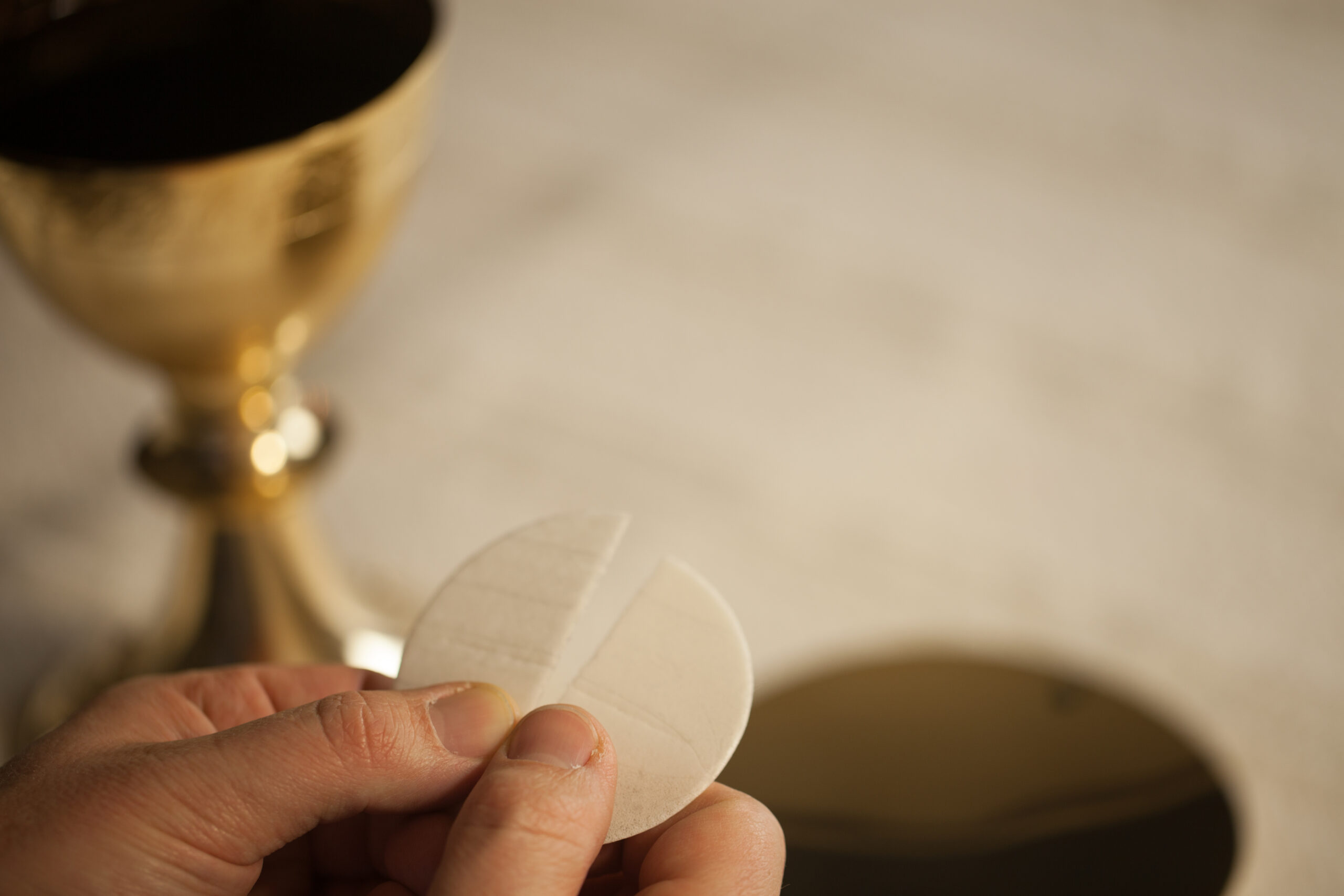The Liturgy of the Eucharist
The Liturgy of the Eucharist begins with the preparation of the gifts and the altar. As the ministers prepare the altar, representatives of the people bring forward the bread and wine that will become the Body and Blood of Christ. The celebrant blesses and praises God for these gifts and places them on the altar, the place of the Eucharistic sacrifice. In addition to the bread and wine, monetary gifts for the support of the Church and the care of the poor may be brought forward. The Prayer over the Offerings concludes this preparation and disposes all for the Eucharistic Prayer.
The Eucharistic Prayer
The Eucharistic Prayer is the heart of the Liturgy of the Eucharist. In this prayer, the celebrant acts in the person of Christ as head of his body, the Church. He gathers not only the bread and the wine, but the substance of our lives and joins them to Christ’s perfect sacrifice, offering them to the Father.
The introductory dialogue establishes that this prayer is the prayer of the baptized and ordained, is offered in the presence of God, and has thanksgiving as its central focus. Following this dialogue, the celebrant begins the Preface, which consists of four different Eucharistic Prayers. After these prayers, communion is then given.
The following timeline follows the traditional Liturgy of the Eucharist:
- Presentation of the Gifts and Preparation of the Altar
- Prayer over the Offering
- Eucharistic Prayer
- Preface
- Holy, Holy, Holy
- First half of prayer, including Consecration
- Mystery of Faith
- Second half of prayer, ending with Doxology
- The Lord’s Prayer
- Sign of Peace
- Lamb of God
- Communion
- Prayer after Communion
The document The Mystery of the Eucharist in the Life of the Church was developed by the Committee on Doctrine of the United States Conference of Catholic Bishops (USCCB). It was approved by the full body of the USCCB at its November 2021 General Meeting and has been authorized for publication.


